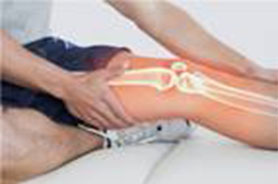Medical Treatments
- Urology Treatment
- Bariatric Obesity Surgery
- Oncology Cancer Treatment
- Cardiology
- Cosmetic Plastic Surgery
- ENT-Head And Neck Surgery
- Infertility Or IVF Treatment
- Joint Replacement Surgery
- Spine Surgery
- Organ Transplant
- Neurology
- Orthopedic Surgery
- Nephrology
- Stem Cell Therapy
- Endocrionology Or Diabetes
- 3D Liposuction Abdomen Lower Back
- Breast Lifting Implant
- Paediatrics Child Neonate
- Robotic Surgery
- Dentistry Dental Implant
- Gynaecology
- Pulmonology /Chest /Respiratory
- Dermatology And Venerelogy
- Opthalmology Eye Treatment
- Gastroenterology Or Hepatology
- Cyber Knife Radiosurgery
- Bone Marrow Surgery Transplant

Joint Replacement Surgery
What are Bone Joints?
Joints are where two ends of bones meet each other. There are many types of joints within the human body. Like for example, shoulders & hips are ‘ball & socket’ joints which involve a rounded end of one bone snugly fitting into a cup-shaped structure of another bone. Then there is the knee joint which is considered to be a ‘hinge’ joint due to its ability to bend & straighten like hinges on doors. Wrist, ankle & elbows are the other type of joints permitting a variety of functions.
What is Joint Replacement Surgery?
Joint replacement surgery involves substituting a natural joint, which has been affected or damaged due to injury or medical disorder, with help of artificial prosthetics & implants to enable joints to regain normal function & movement. Joints in the body usually consist of two bones being in a synchronous position & attached with a number of tendons & ligaments that are meant to strengthen the joint. There is a cartilage tissue at the point where components of the joints meet & which acts as a lubricant to the joint while preventing bones of the joint to directly rub against one another. Bones, ligaments, tendons & cartilage tissue are the main components of joints in the body. Main joints in the body are the shoulder joints, elbow joints, hip joints and the knee joints along with the neck joint, jaw joint, ankle joint & all the fingers & toes joints. People’s joints may get damaged due to diseases such as arthritis or other bone degenerative diseases as well as get damaged resulting from traumatic & severe injuries. Most of the joint replacement surgery procedures are required for hip joint, shoulder joint or the knee joint.
Why Undergo Joint Replacement Surgery
Joints can often get damaged due to injuries, arthritis & other diseases. Years of constant use or arthritis can cause joints to wear away. This will result in causing swelling, stiffness & pain. Damage & diseases to joints will limit the amount of blood flow & cause problems in bones to grow, remain healthy & be able to repair themselves.
What is the New Artificial Joint Like?
Also called prosthesis, artificial joints are made of ceramic, plastic or metal parts. These may either be cemented or not cemented into place & may then allow the bone to grow into it. At times, both these methods may also be combined to keep the new artificial joint in place. Cemented joints are most often utilized in older patients who do not usually move around as much & in people having weak bones. While cement holds the artificial joint to the bone, uncemented joints may take longer to heal, but they fit stronger with bone growing into the prosthesis & attaching very well. However, uncemented joints are generally recommended for younger patients, who are more active & have good bone quality. Newer artificial joints last for about at least 10 – 15 years, if not more. This is why younger joint replacement patients may be required to undergo revision surgery for replacing the same damaged joint more than one time.
Good Candidates for Joint Replacement Surgery
Only an orthopedist can say that a patient requires the joint to be replaced. For this, they will look at the joint with help of x-rays, or MRI or CT scans. They will probe an arthroscope into the joint to look for amount of damage & extract a small sample of tissue which may be sent to a laboratory for testing. After looking at the joint, doctors may suggest that the patient should consider exercise, physical therapy, walking aids like canes or braces or vitamin supplements & medicine. Medications for arthritis include drugs which effectively reduce inflammation. Moreover, depending upon the type of arthritis, doctors may even prescribe corticosteroids or some other drugs. Though, many drugs may also cause side effects, including loss of bone. When these treatments do not work, doctors can suggest an operation which is known as osteotomy. This involves the orthopedic surgeon aligning the joint. During operation orthopedic surgeons may cut bone or bones around the joint in order to improve alignment. Although this may be simpler than replacing joints, it may however take longer period of time to recover. However, this treatment option has become less common & is effectively being replaced by joint replacement surgery which is often an answer for patients who are unable to move the joints well enough. Like for example people having trouble with walking, taking a bath or climbing stairs can get respite from joint replacement surgery. Joint replacement surgery most often is an ideal answer in such situations.
Recommending Total Joint Replacement Surgery
There are many conditions which can cause disability & joint pain that can lead patients to consider joint replacement surgery as a viable option. However, In most cases joint pain is caused by damage to articular cartilage lining the end of bones, either from fractures, arthritis or some other condition. Doctors usually recommend total joint replacement surgery for patients only when physical therapy, medications & changes in everyday activities fail to relieve pain & disability of the patient.
Preparing for Joint Replacement Surgery
Weeks prior to joint replacement surgery, the primary doctor & the surgical team will spend time preparing the patient for the upcoming procedure. Like for example, the doctor will check patients for general health while orthopedic surgeons will make them undergo several tests like cardiogram & blood tests which will be helpful in planning for surgery. Moreover, there are several other things which are required as preparation. Patients must talk to doctors & ask questions. They must also prepare themselves physically by eating a healthy diet alongside exercising. They should take steps to arrange for someone to manage the first few weeks at home & obtain assistive items like hand rails, long-handled reachers & shower benches. Planning ahead will ensure they undergo smooth surgery & enable speedy recovery.
Total Joint Replacement Surgery Procedure
Total joint replacement surgery usually takes a few hours of time to complete. This procedure is normally performed either in a hospital or an outpatient surgery center. Damaged cartilage & bone are removed from the joint in the initial part of the operation & replaced prosthetic components which are made of ceramic, plastic or metal. The prosthesis is designed to mimic the shape & movement of the natural joint. Like for example in arthritic hip, damaged upper end of femur (ball) is replaced with a metal ball attached to a metal stem which is fitted into femur & a plastic socket implanted into pelvis which replaces the damaged socket.
Types of Joint Replacement Surgeries
Knee joint & hip joint replacements are helping people of all ages live active & pain-free lives. Joints are formed at both ends of two or more bones which are connected by cartilage tissue during joint replacement procedures. Healthy cartilage typically serves as a protective cushion which allows low-friction movement within joints. When cartilage gets damaged by injuries or diseases tissue around joints get inflamed & cause pain. Normally, cartilage wears away with time so as to allow rough edges of bones to rub against each other & to cause more pain. When only a part of joint is damaged, surgeons are able to either repair or replace only the damaged parts. In case the entire joint is damaged, total joint replacement is the best option. Total joint replacement involves removing the damaged or diseased portions & inserting artificial parts as the new joint & which are known as implants or prostheses.
• Minimally Invasive Joint Replacement Surgery
Total Knee Replacement (TKR) & Total Hip Replacement (THR) are quite successful surgical interventions for treatment of arthritis of the knee & hip respectively. Hip & knee replacement surgery over the last many years has evolved into minimally invasive techniques as well. Advantages of undergoing minimally invasive joint replacement surgery include the following.
• Lesser tissue trauma involving tendons & muscles which are separated or avoided to be cut
• Faster & much less painful rehabilitation program
• Smaller incisions & lesser scarring involving just two incisions of 1.5 – 2 inches each, rather than a 10 – 12 inch long incision
• Shorter stay at hospital for just 1 – 2 days against 3 – 5 days; some patients also go home within 24 hours
• Reduced loss of blood & lesser need for pre-surgery donation of blood
• Faster return to normalcy including work & daily activities
• Computer Assisted Joint Replacement Surgery
Computer Assisted Surgery technology allows surgeons to simultaneously visualize 2D or 3D views of the patients’ anatomy on a monitor screen so as to provide real-time intra-operative views of relative digital positioning of implantable devices & surgical instruments.
• Total Hip Replacement Surgery
Hip joint is made of the upper end of femur (thigh bone) & the acetabulum (pelvic bone) which resemble as a ‘ball & socket’ type of joint. Upper end of femur is shaped in a ball which fits perfectly in the socket within the acetabulum. There is a thin layer of cartilage that provides lubrication to the hip joint & enables smooth movement. In hip replacement surgery doctors will make an incision along the hip region. They will then shift aside muscular tissues & ligaments to gain clear access to the hip joint. After this doctors will remove the ball-end of femur as well as the acetabulum socket & clean the joint area of any kind of debris (bits of bones, damaged cartilage & tissues, etc) & scrape the upper end of femur & the lower end of acetabulum to a corresponding shape on which the artificial implants made of synthetic materials will be affixed. In addition to this doctors will place a spacer (artificial lubricant material) between the artificial joints to enable smooth movement & also to avoid friction between the joint components. Doctors will ensure that these implants are fixed perfectly & the movement of the new hip joint will be as normal as possible. Doctors then close the incision after putting the muscular tissues & ligaments in place. Patients may be required to stay in hospital for a few days till doctors are satisfied there is no risk of any complication after going home.
• Total Knee Replacement Surgery
Also known as total knee arthroplasty, total knee replacement surgery replaces the arthritic knee joint with artificial plastic or metal replacement parts known as prostheses. This procedure however, is recommended for older people who suffer from loss of function & pain from arthritis & have also failed to benefit from other conservative methods of treatment. Atypical knee replacement surgery replaces both ends of tibia (shin bone) & femur (thigh bone) with plastic inserted in-between them along with the patella (knee cap).
• Uni Condylar Knee Replacement
This involves replacing only one end of the knee joint through a smaller incision than the one which is made for total knee replacement surgery. Implant design & instrumentation along with surgical technique has markedly improved so as to make unicompartmental arthritis procedure a success. Recent advances also allow doctors to perform this replacement procedure through smaller incisions & not to cause trauma to the knee while making recovery quicker.
• Revision Knee Replacement Surgery
This usually means that parts or all of the previous knee replacement components need to be revised. However, this operation varies from making minor adjustments to massive operations involving replacement of significant amounts of bone along with the artificial implant. Pain is the primary reason behind revision surgery. Most often the cause is clear but not always. Knees without any obvious cause of pain in general fail to do well following revision surgery.
• Polyethylene (plastic) Wear – This is one of the easy revision procedures where only the plastic insert has to be changed.
• Instability – It means that the knee is not stable & may either be giving way of not feeling safe while walking.
• Loosening of Femoral or Acetabular Component – This usually manifests as pain but may also be asymptomatic. This is why artificial joint replacement should be followed up for life since changes on x-ray can indicate that the prosthetic knee joint should be revised despite experiencing any signs of symptoms.
• Infection – This usually presents as pain but may at times also present as acute fever.
• Osteolysis (bone loss) – This usually occurs due to particles being released into knee joint & which can result in destruction of bone.
• Stiffness – Stiffness is difficult to improve with revision surgery but can generally help in the right indications.
• Revision Hip Replacement Surgery
Involving replacing a part or all previous hip replacement components is called revision hip replacement surgery. Varying from minor adjustments to major operations involving replacing significant amounts of bone along with the artificial joint, every revision hip replacement surgery procedure is unique & therefore quite difficult to describe in full. Pain is the primary reason as to why people go for revision surgery. The cause is quite clear in most cases, but not always. Artificial hip joints without any obvious cause for pain are found not to do as well following surgery.
• Polyethylene (plastic) Wear – This is one of the easiest revision procedures involving only the plastic invert serving as cartilage within the joint to be replaced.
• Instability (dislocation) – This means that the hip joint is popping out of place.
• Loosening of Acetabular or Femoral Component – Usually manifesting as pain, loosening components of the artificial hip joint can be asymptomatic as well. This is why artificial joint replacement patients must have their joints followed up for life as any changes can be indicative that the artificial hip should be revised despite any having no symptoms at all.
• Infection – Infection usually results in pain but may at times manifest as general feeling of unwell or acute fever sometimes.
• Osteolysis (bone loss) – This usually occurs when particles are released in hip joint & which will eventually end up destroying bone.
• Pain from Hardware – This commonly includes wires or cables causing irritation.
• Shoulder Replacement Surgery
Shoulder joint is a ‘ball & socket’ type of joint with the upper end of humerus (upper arm bone) shaped like a ball & the scapula (shoulder blade) having a socket in which humerus fits snugly. There are a number of ligaments & tendons that provide strength & support to the shoulder joint & a layer of cartilage between the ball & socket gives sufficient lubrication for movement. In case the cartilage gets damaged or wears off due to arthritis or an injury, shoulder replacement surgery might be required to regain movement & function of the shoulder. Surgeons during this procedure will replace the ball end of humerus & the socket portion of scapula with synthetic implants that will function as the natural joint components did earlier.
• Elbow Replacement Surgery
Although elbows are not weight-bearing joints, they are considered to be quite important for functioning of upper limbs. Even a minor trauma or disease condition which affects elbows can be painful & limit movement of upper limbs. Arthritis is a common disease condition which affects elbow joints. Other conditions affecting elbows include sepsis, hemophilia, crystalline arthropathy, primary degenerative osteoarthritis & fractures. Total elbow replacement surgery is usually used for restoring function & relieving pain in elbows affected by rheumatoid arthritis. With advent of arthroplasty procedure, outcomes of surgeries have greatly improved. Total elbow replacement arthroplasty is generally indicated in cases of traumatic arthritis, rheumatoid arthritis, osteoarthritis, ankylosis, bone injury & failed elbow joint replacement surgery. Elbow muscles will be balanced, scar tissue removed & damaged elbow joint will be replaced by a new artificial joint during total elbow replacement surgery. This artificial joint will be fixed to the inside of ulna & to the inside of humerus. Hinge pins may be utilized to connect limb with other bones in order to give stability to the joint.
• Wrist Joint Replacement Surgery
Also known as total wrist arthroplasty, wrist joint replacement surgery is normally used to treat symptoms of arthritis in wrist which has not positively responded to nonsurgical treatments like therapy or medications. Goal of wrist joint replacement surgery is to eliminate pain & increase mobility of wrist joint. Wrist joint replacement surgery typically performed under sterile conditions within an operating room with patients under the influence of regional or general anesthesia. Quite often this is performed as day surgery which enables the patient to go back home the same day.
• Total Ankle Replacement Surgery
TAA or Total Ankle Arthroplasty is also known as total ankle replacement. This is a surgical procedure which orthopedic foot & ankle surgeons utilize as treatment for ankle arthritis. These changes due to arthritis can be a result of normal wear & tear because of aging or from injuries like dislocation or a broken ankle. Arthritis would anyway eventually lead to deformity, pain or loss of cartilage. Goal of total ankle replacement surgery is to improve ankle motion so that the patient experiences lesser pain during activity. TAA is generally considered for patients experiencing decreased function & pain in ankles from arthritis after conservative management has failed. Conservative management generally includes pain medication, activity modification, physical therapy, bracing & medicine. Patients with rheumatoid arthritis are generally good candidates for ankle replacement surgery. Other patients who are considered ideal candidates are those who require but do not want to undergo a fusion-type of ankle surgery which would completely eliminate motion at the ankle joint.
Risks & Complications of Joint Replacement Surgery
Doctors would invariably explain potential risks & complications of total joint replacement surgery to patients, including those related to general surgical procedures & those which can specifically occur over time following surgery. Most of these complications however can be successfully treated. Some of the more common complications associated with joint replacement surgeries include nerve injury, blood clots, infection & problems with prosthesis like dislocation or loosening. However, joint replacement surgeries are usually successful in most people who undergo this treatment. Even when problems occur, they are most often treatable. Some of the common problems which occur after joint replacement surgeries include the following.
• Infection – Incision sites & areas around the new joint can get infected. This can either happen when the patient is in the hospital or even after he has returned home. Sometimes, this may even occur years later. Minor infections at the incision site are usually treatable with drugs, but deep infections would require another operation for treatment or for replacing the joint.
• Blood Clots – Whenever blood flows slowly following joint replacement surgery, there are chances of formation of lumps called blood clots. In case pain & swelling develop in legs, especially after knee or hip surgery, blood clots may be the cause. Doctors therefore suggest that patients wear special stockings or boots, exercise & take blood-thinning medications so as to help the blood move faster. Patients on their part must immediately contact the doctor when they notice pain, redness or swelling in leg after they are discharged from the hospital.
• Loosening of Artificial Joints – The new artificial joint may sometimes loosen so as to cause pain. In case the problem is bad, the patient may need to undergo another operation in order to reattach the joint to bone.
• Dislocation – The ball of the artificial new joint can come out of the socket sometimes after hip or other joint replacement surgery. However, in most cases including hip can be corrected without any additional surgery. Patients may also be required to wear braces for a while in cases where dislocation is found to occur.
• Wear & Tear – Some amount of wear can be found in all joint replacement surgeries & too much wear may eventually cause loosening of the joint. Doctors in such cases may operate again in case the artificial joint comes loose. Quite a few times the plastic can also wear thin & doctors may have to just replace plastic serving as cartilage & not the entire joint.
• Blood Vessel & Nerve Injuries – Although this does not happen often, nerves near the replaced joint may sometimes get damaged during surgery. However, this damage over time improves & may also disappear. Blood vessels near the replaced joint may sometimes get injured. Movement will improve, flexibility will increase & pain may lessen as the patient moves the new artificial joint & helps muscles grow strong once again.
Recovery Following Joint Replacement Surgery
Rehabilitation & recovery will be quite different for each person. Doctors generally encourage joint replacement surgery patients to use the artificial joint shortly after the operation is complete. Though this may be challenging, following instructions of doctors will however speed up the process of recovery. Most patients usually experience some amount of temporary pain in replaced joints due to the surrounding muscles which are weak from inactivity, adjustment of the new joint with the body & tissues which are in the process of healing. This pain will eventually resolve within a few months of time. At this point of time, exercise usually serves as an important part of recovery. Doctors or physical therapists can provide specific exercises which can help in restoring movement & strengthening the joint. Joint replacement surgery patients who are having any questions regarding limitations on activities following the procedure should consult the doctor for guidance.
Joint Replacement Surgery Long-Term Outcomes
Majority of joint replacement surgery patients are able to perform normal daily activities more easily following the operation. Most patients can expect joint replacement surgery outcomes to last for many years & provide them with improved quality of life which includes lesser pain along with improvement in motion & strength which would not have been possible without joint replacement surgery procedures. However, success of surgery generally depends upon what patients doing after getting back home. They should make it a point to follow surgeon’s advice about what to eat, medications to take & the types of exercises recommended by the physical therapist. Patients should also talk to the doctor about any pain they are experiencing or having trouble in moving the joint.
Why Choose AVAN MediTour for Joint Replacement Surgery
For any type of joint replacement surgery to be successful it is essential that the doctor & surgeon should understand the exact severity & the best possible remedial option for treatment. Orthopedic doctors & surgeons in the wide network of hospitals & specialty clinics spread across many locations in the world are extensively trained & have an immense amount of experience that enables them to have the expertise & confidence to perform successful joint replacement procedures. These well-reputed hospitals & large number of orthopedic clinics are located in India, South Korea, United Arab Emirates, Turkey & Germany. They are also equipped with the latest medical diagnostic & surgical technologies which provide essential support to orthopedic surgeons & doctors. Above all the budget for joint replacement surgery with AVAN MediTour is most affordable for the international patient when compared to availability of similar procedures in developed western countries.
Types Of Joint Replacement |
Days in Hospital |
Procedure Cost (USD) |
|---|---|---|
| TKR (Unilateral) – PFC Sigma Implant cost in India | 7 | 5500 |
| TKR (Unilateral) – Hi Flex Implant cost in India | 7 | 5500 |
| TKR (Unilateral) – Uni Knee cost in India | 5 | 5200 |
| TKR (Bilateral) – PFC Sigma Implant cost in India | 9 | 9300 |
| TKR (Bilateral) – RPF cost in India | 9 | 9500 |
Types Of Joint Replacement |
Days in Hospital |
Procedure Cost (USD) |
|---|---|---|
| THR (Unilateral) – Routine 1 | 7 | 4700 |
| THR (Unilateral) – Routine 2 | 7 | 5400 |
| THR (Unilateral) – ASR | 7 | 6600 |
| THR (Unilateral) – Unipolar ASR | 7 | 6700 |
| THR (Unilateral) – Proxima | 7 | 7200 |
| THR (Bilateral) – Routine 1 | 9 | 7800 |
| THR (Bilateral) – Routine 2 | 9 | 9200 |
| THR (Bilateral) – ASR | 9 | 11500 |
| THR (Bilateral) – Unipolar ASR | 9 | 12000 |
| THR (Bilateral) – Proxima | 9 | 12500 |
| Ankle Replacement Surgery cost in India | 5 | 7000 |
| Elbow Replacement Surgery cost in India | 5 | 7000 |
| Total Hand Surgery cost in India | 5 | 3500 |
| Ankle Replacement surgery cost in India | Depends upon the treatment | 30000 |
Types Of Joint Replacement |
Days in Hospital |
Procedure Cost (USD) |
|---|---|---|
| Single (Including Implant) | 7 | 8000 |
| Double (Including Implant) | 14 | 15600 |
Types Of Joint Replacement |
Days in Hospital |
Procedure Cost (USD) |
|---|---|---|
| Menisectomy surgery cost in India | Depends upon the treatment | 7500 |
| Shaving of cartilage surgery cost in India | Depends upon the treatment | 8000 |
| Ligament Reconstruction – ACL, PCL surgery cost in India | Depends upon the treatment | 17000 |
| Ankle Arthroscopy surgery cost in India | Depends upon the treatment | 8000 |
| Knee Arthroscopy surgery cost in India | Depends upon the treatment | 8000 |
| Elbow Arthroscopy surgery cost in India | Depends upon the treatment | 8500 |
| Shoulder Arthroscopy surgery cost in India | Depends upon the treatment | 8000 |
| Hip Arthroscopy surgery cost in India | Depends upon the treatment | 8000 |
| Tendon Repair surgery cost in India | Depends upon the treatment | 9000 |
Inclusions and Exclusions
INCLUSIONS
1. Airport Pick-up on Arrival in India2. Airport Drop on Departure from India
3. Cost of initial Evaluation and Diagnosis
4. Cost of the Surgery or Treatment
5. Cost of applicable one implant/prosthesis
6. OT Charges and Surgeon’s Fees
7. Consultation Fees of the Doctor for the concerned specialty
8. Nursing and Dietician’s Charges
9. Hospital Stay for the specified number of days in the respective room category as mentioned against the package
10. Hospital stay includes stay of the patient and one attendant for the duration of stay mentioned against the package
11. Routine investigations and medicines related to the surgery or treatment.
12. Food for the patient and the attendant for the specified number of days as mentioned against the package
13. Travel Assistance/Medical Visa Invite/FRRO/ Visa Extensions
14. Assistance in finding right budget hotel or guest house accommodation.
15. Issuing Invitation Letter for Medical Visa.
EXCLUSIONS
1. All expenses for stay beyond the specified number of days2. Cross Consultations other than the specified specialty
3. Use of special drugs and consumables
4. Blood products
5. Any other additional procedure
6. Post discharge consultations, medicines, procedures and follow-ups
7. Treatment of any unrelated illness or procedures other than the one for which this estimate has been prepared
8. Travel Expenses and Hotel Stay
DISCLAIMER:
* Quote given is ONLY for the treatment in the hospital and DOES NOT include food as well as the accommodation cost outside the hospital.
* The quote may vary in case of co-morbidities, which are associated medical conditions and an extended stay.
* The treatment suggested is as per the information and reports provided to us. The line of treatment may differ according to the additional and comprehensive details asked by our consultants.
* The prices quoted are only indicative and may differ. They can be confirmed only after the patient is assessed by a doctor.
* The complete treatment cost has to be deposited in advance after the finance counseling for the patient is done at the hospital











